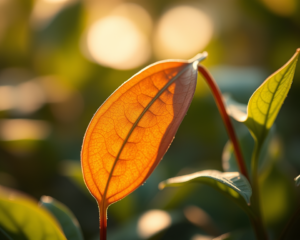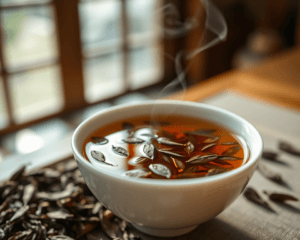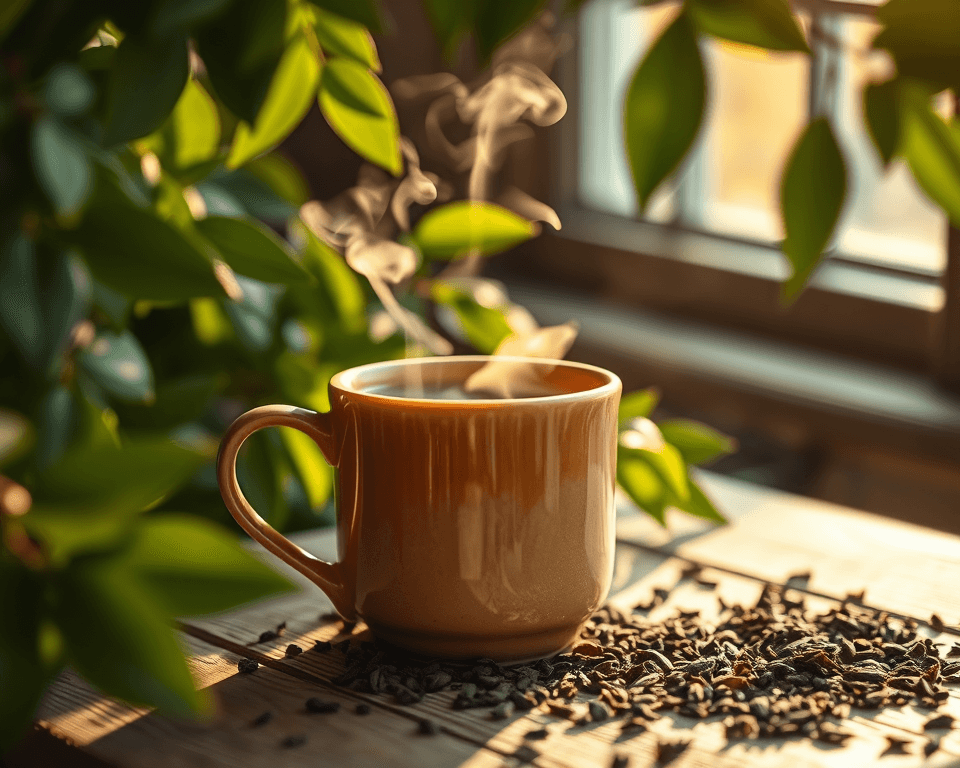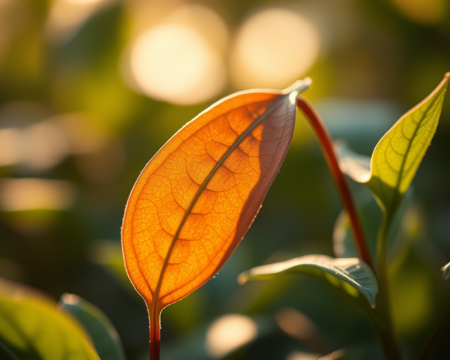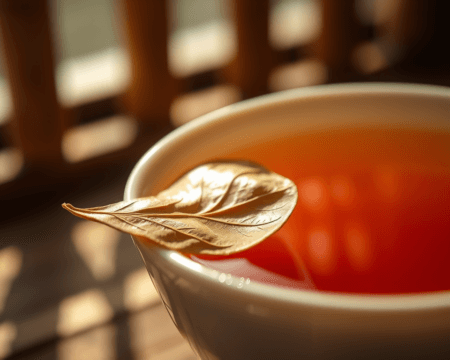If you’re a tea enthusiast like me, you probably know that tea is more than just a drink; it’s an experience packed with flavor, culture, and yes, those intriguing compounds called tannins. The big question is: what the heck are tannins, why should you care, and how do they affect your cup of tea? Grab your favorite mug, because we’re about to spill the tea on tannins and everything they bring to the table.
Key Takeaways
- Tannins are natural chemical compounds found in tea that contribute to its astringency and antioxidant properties.
- The type of tea you choose—black, green, oolong, or white—significantly impacts the tannin levels and flavor profile of your brew.
- Brewing methods, including time and temperature, play a crucial role in how tannins are extracted, affecting the taste and health benefits of your tea.
What is Tannin?
Definition of Tannin
Let’s break it down. Tannins are a type of polyphenol, a group of naturally occurring chemical compounds in plants. You’ll find them in a variety of sources—think red wine, dark chocolate, and, of course, tea. But they’re not just there to be interesting; they’ll tickle your taste buds with astringency, leaving your mouth feeling a tad dry or puckered.
This astringency is one of the most noticeable characteristics of tannins, and it’s why that first sip of a strong black tea can sometimes make you feel like you’ve bitten into a dry apple. That’s the tannins talking! They also pack a punch as natural antioxidants, which means they help fight off those pesky free radicals in your body. We’re talking about health benefits you can sip on and enjoy.
Sources of Tannin in Tea
Now, where do these tannins come from in the tea world? The primary source is the tea leaves from the Camellia sinensis plant. Depending on how the leaves are processed, you’ll get different tannin levels.
- Black Tea: Typically contains the highest amount of tannins. The leaves undergo full oxidation, leading to a bold flavor profile packed with those tannins.
- Green Tea: Less oxidation means slightly lower tannin levels compared to black tea, giving it a more subtle flavor.
- Oolong Tea: Think of this as the middle child—partially oxidized, which means it carries a balanced profile of tannins.
- White Tea: The least processed of all. It usually has the lowest tannin content, resulting in a lighter, sweeter brew.
- Herbal Infusions: These can vary widely, but many pesky herbal teas don’t contain true tannins because they aren’t made from the Camellia sinensis plant.
How Tannin Influences Flavor in Tea
The Role of Tannin in Taste
Let’s talk flavor! Tannins don’t just sit there like wallflowers; they play a huge role in your cup. When you sip on a tea with a high tannin content, you might notice that astringent kick—yeah, that’s what makes your mouth feel a touch dry. Tannins influence the taste profile by adding depth and complexity. The interplay of tannins and other flavor compounds creates a sensory experience that can be simply delightful, provided you brew it right.
Here’s the kicker: the astringency of tannins can balance out the sweetness and bitterness in tea, playing a crucial game of flavor chess. Imagine sipping a strong black tea with hints of honey. It’s a match made in heaven, all thanks to the tannins finding that perfect balance.
Tannin Interaction with Other Compounds
Tannins don’t exist in a vacuum—you can find them mingling with other compounds like flavonoids, catechins, and even caffeine. This cheery cocktail can enhance flavors and aromas, leading to a more complex cup. The way tannins interact with sugars can make the overall flavor experience richer and more satisfying.
But there’s more! You’ve got health implications to consider. Sure, those antioxidants are awesome, but it’s essential to know how different compounds work together. For instance, high tannin levels paired with caffeine can boost energy, but for some, it might lead to a jittery cup. Finding the right combination in your brew is key to enjoying tea to its fullest.
Health Benefits and Drawbacks of Tannin in Tea
Potential Health Benefits
Are you ready to sip for your health? Tannins come with a list of potential health benefits, and they’re not just for show. These little warriors are packed with antioxidants and have been linked to improved heart health and anti-inflammatory properties. Some studies even suggest that tannins could aid in weight management and digestion. That’s what I call a good reason to brew your daily cup!
The science backs this up. Regular tea consumption can contribute to a healthier lifestyle. Just think of those cozy tea moments you cherish—they might actually be doing your body some good.
Misconceptions About Tannin’s Health Effects
Now, let’s clear the air about myths surrounding tannin’s health effects. Some folks might think that more tannins mean more health benefits. But let’s be real—overconsumption can lead to health risks, including digestive issues or iron absorption problems. It’s all about balance, folks! Misleading information can muck up your tea-drinking experience. Aim for moderation, and you’ll be sipping like a champ.
Tannin Levels in Different Types of Tea
Comparison of Tannin Content
When it comes to tannins, all teas are not created equal. Here’s a quick snapshot of where different types of tea stand in the tannin department.
| Type of Tea | Tannin Content | Flavor Profile |
|---|---|---|
| Black Tea | High | Bold, strong, astringent |
| Green Tea | Moderate | Mild, grassy, slightly astringent |
| Oolong Tea | Moderate to High | Complex, smooth, slightly astringent |
| White Tea | Low | Light, floral, sweet |
| Herbal Tea | Varies | Varies widely, often low in true tannins |
Understanding these differences helps you choose the right tea for your mood and taste preference.
Cultural Significance of Tannin in Tea Drinking Practices
You can’t talk about tea without touching on its rich cultural tapestry. Tannin embodies traditions, rituals, and social practices across the globe. Whether it’s the precise art of a Japanese tea ceremony or the casual sipping you’d find in a British afternoon tea, tannin plays its part. It has significance beyond just taste; it represents health beliefs and culinary customs that have been passed down through generations.
In many cultures, the way tea is prepared and consumed is a way to connect. From family gatherings to solitary moments of self-care, every sip tells a story of its own. The social aspect of tea drinking is a beautiful reminder of how a seemingly simple ritual can have deep-rooted significance shaped by tannins and flavor.
Brewing Methods and Their Effect on Tannin Levels
Effects of Brewing Time on Tannin Extraction
Let’s get into the nitty-gritty: how you brew your tea matters, especially for those tannin levels! The extraction rate of tannins significantly varies based on brewing time and water temperature.
Quick science lesson: prolonged steeping times mean more tannins released into your cup. If you like your tea strong and bold, go for it! But keep in mind that it might also intensify the bitterness and dryness. On the flip side, a short steep can keep things light and smooth. You want to hit that sweet spot, where flavor meets a pleasant mouthfeel—aim for about 3-5 minutes for black tea, 2-3 for green, and experiment to find your sweet spots.
Achieving the Right Balance of Tannins in Tea
So how do you reach that ideal balance of tannins? Here’s where personal choice comes into play. Experimentation is key! You can adjust brewing time, water temperature, and even the quantity of tea leaves you use.
For example, if you find that your black tea is too astringent, try reducing the steeping time or lowering the temperature slightly. Prefer your green tea a bit bolder? A minute longer might do the trick. Through a bit of trial and error, you’ll discover what works for your palate. Remember, your next perfect cup is just a brew away.
Engaging with the world of tea through this lens is rewarding and can lead to A-ha moments and incredibly satisfying sips. So next time you grab your favorite blend, think of the tannins at play—their influence is subtle yet significant, transforming a simple drink into a flavorful adventure.
Frequently Asked Questions
What are tannins in tea and how do they affect flavor?
Tannins are natural compounds present in tea that contribute to its astringency and flavor complexity. Higher tannin levels can create a more bitter taste, while lower levels tend to yield a smoother, more delicate flavor. The type of tea and brewing conditions influence tannin extraction.
Which type of tea has the highest tannin content?
Black tea typically contains the highest levels of tannins due to its complete oxidation process during production. Oolong tea has moderate tannin levels, while green and white teas generally have lower levels, resulting in a lighter flavor profile.
How does brewing time and temperature impact tannin levels?
Longer brewing times and higher temperatures extract more tannins from tea leaves. For optimal flavor, it is often recommended to adjust these variables based on the type of tea you are using—shorter steeping times for green tea and longer for black tea.
Can I reduce tannin content in my tea?
Yes, you can reduce tannin levels by shortening the steeping time or using cooler water temperatures. Additionally, using less tea leaves can also minimize tannin extraction, resulting in a less astringent brew.
Are there health benefits associated with tannins in tea?
Tannins have antioxidant properties and may contribute to various health benefits, including improved heart health and reduced inflammation. However, moderation is key, as excessive intake can lead to digestive discomfort or hinder nutrient absorption.
Is it safe to drink tea with high tannin content?
Generally, drinking tea with high tannin content is safe for most people in moderate quantities. However, individuals with certain conditions (e.g., iron deficiency) may want to limit their intake, as tannins can inhibit iron absorption.
Can I enjoy tannin-rich teas without the bitterness?
Absolutely! You can balance out the bitterness by adding sweeteners like honey or by blending with other flavorful ingredients, such as herbs or spices. Experimenting with milk or cream can also soften the astringency.
Do all brewing methods affect tannin extraction equally?
No, different brewing methods (like cold brewing or traditional steeping) can extract tannins differently. Cold brewing usually results in lower tannin extraction, yielding a smoother flavor compared to hot brewing.
Should I consider the type of tea when looking for health benefits?
Yes, different types of tea offer varying health benefits due to their unique profiles of tannins, antioxidants, and other compounds. Choosing the right type of tea based on your health goals can enhance your overall well-being.
